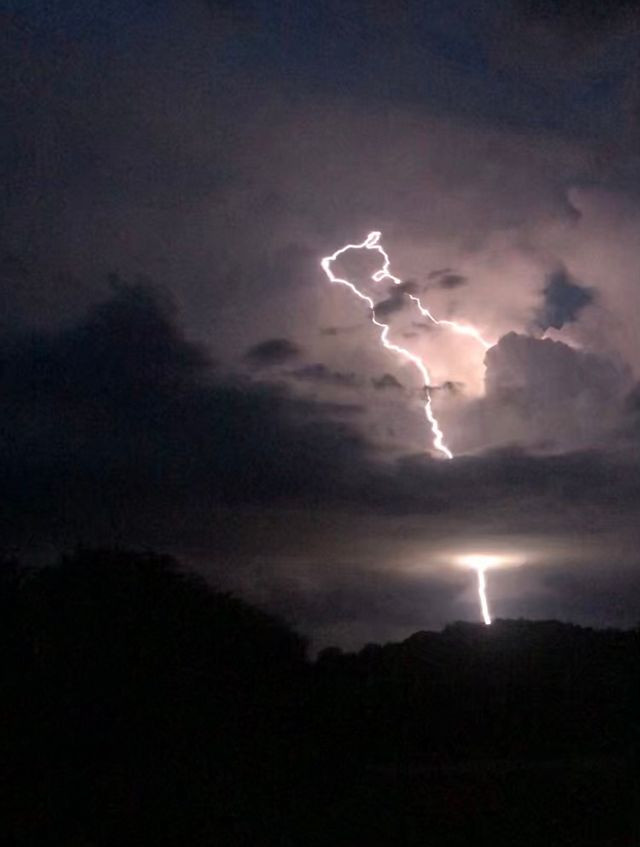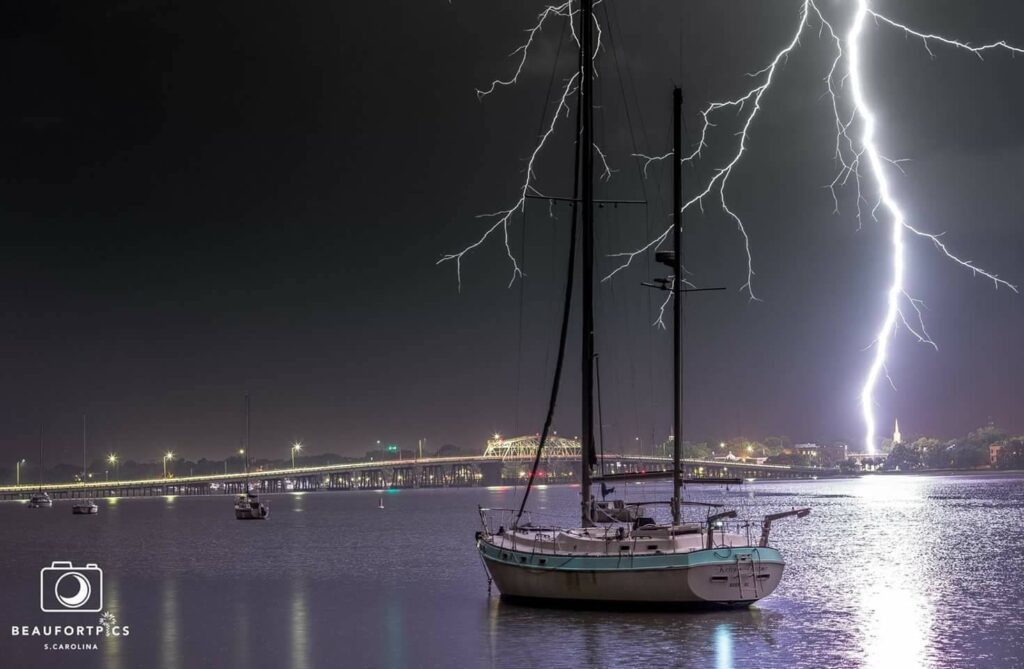What’s That Noise? Understanding Summer Weather on Hilton Head
 If you’ve spent a summer in Palmetto Dunes, chances are you’ve experienced a sudden rumble of thunder or seen flashes of light dance across the sky long after sunset—without a drop of rain in sight.
If you’ve spent a summer in Palmetto Dunes, chances are you’ve experienced a sudden rumble of thunder or seen flashes of light dance across the sky long after sunset—without a drop of rain in sight.
Welcome to the fascinating world of Hilton Head Island’s summer weather, where the rhythms of coastal life meet the unpredictability of Mother Nature. Let’s unpack some of the seasonal weather quirks you might notice—and what causes them.
🌧️ Why Have We Been Getting So Many Afternoon Storms?
If you’ve noticed more afternoon and evening downpours lately, you’re not imagining things. Over the past couple of weeks, Hilton Head has seen an uptick in late-day storm activity, a pattern that’s not unusual for this time of year.
Here’s what’s going on:
- Lingering heat and humidity build up through the day, creating the perfect conditions for storm development by mid-to-late afternoon.
- As the sea breeze front moves inland, it collides with the warmer air over the island—especially in areas like Palmetto Dunes—triggering pop-up thunderstorms.
- These storms can form quickly and may drop heavy rain in a short amount of time, followed by clearing skies and even a sunset glow.
This type of daily storm cycle is one of the most recognizable weather patterns of the Lowcountry summer.
🌦️ Why Do Storms Pop Up So Quickly?
It’s a classic Hilton Head scenario: a sunny afternoon suddenly darkens, and within minutes, rain is pouring down in sheets. These fast-developing thunderstorms are common from June through September.
☀️Heat + Humidity = Storm Fuel
On hot, humid days:
- The land heats up faster than the ocean.
- This creates rising columns of warm air (called thermals).
- Moisture from the Atlantic Ocean and local marshlands is pulled upward.
- As that moist air reaches cooler altitudes, it condenses—leading to cloud formation and sudden storms.
🌬️Sea Breezes Play a Big Role
 Hilton Head’s coastal location helps trigger storms:
Hilton Head’s coastal location helps trigger storms:
- A sea breeze front forms where cooler ocean air meets warmer land air.
- This boundary often acts as a spark for afternoon or evening thunderstorms—especially in areas like Palmetto Dunes, which sit right at the land-sea intersection.
⚡ What Is Heat Lightning?
You’ve probably seen it: bright flashes of lightning in the distance on a warm night, often without any thunder. Locals call it heat lightning, but that’s actually a misnomer.
It’s Real Lightning—Just Far Away
- Heat lightning is a thunderstorm too far away for thunder to be heard.
- Thunder fades out after about 10–15 miles, but light travels farther, so you can still see the flashes
Why It’s Common on Hilton Head
- The flat terrain, open views, and warm nights make distant lightning easily visible.
- You’re likely seeing storms miles inland or far offshore lighting up the Lowcountry sky.
⛈️Thunder That Feels Like It’s Right Overhead
Another signature of summer weather here? Thunder that shakes the whole house.
Storm Clouds Can Be Low and Dense
- Warm, moist conditions lead to low-hanging thunderstorm clouds.
- When lightning strikes nearby, the sound travels quickly and powerfully through the heavy air—creating those deep, rumbling booms that feel like they’re right above you.
✅ What to Do During Sudden Storms
While most summer storms are brief and pass quickly, they can pack a punch. Keep these safety tips in mind:
- When thunder roars, go indoors. Lightning can strike before the rain starts.
- Avoid golf courses, pools, and lagoons. Water and open areas increase your risk.
- Use a reliable weather app or NOAA Weather Radio for real-time alerts.
 🌅 Nature’s Summer Soundtrack
🌅 Nature’s Summer Soundtrack
At first, Hilton Head’s summer weather may seem unpredictable—even dramatic. But for those who live here, or call Palmetto Dunes home, these pop-up storms and nighttime light shows become part of the island’s unique rhythm.
Understanding the science behind them helps us appreciate how alive the Lowcountry sky truly is.
So next time you hear a rumble in the distance, you’ll know: it’s just Hilton Head doing what it does best—putting on a show.
